Join the course
Humblebrag raclette put a bird on it blog, fam hexagon jianbing neutra godard plaid scenester.
Homesteading 101 Starter Course
Family
Free Guide
Courses & Guides
shop with me
FAVE LINKS
Low Toxic Living
Homesteading
Homemaking
Recipes
Topics
I’m a homesteader, homemaker, milkmaid, and bread baker! This is my very own slice of the internet, dedicated to inspiring you to live old fashioned in today's modern world. I’m so excited you’re here, and can’t wait to connect with you.
Here’s a comprehensive guide on how to freeze sourdough bread and instructions for refreshing it once thawed, ensuring you can enjoy delicious sourdough whenever you like!
Freezing sourdough bread is an excellent option for those who love its taste but can’t always find the time to bake it. The good news is that freezing sourdough bread doesn’t compromise its quality or texture.
By following the right steps to refresh it, your thawed sourdough bread will be just as flavorful as freshly baked.
Additionally, it’s worth noting that you can freeze sourdough starter for up to 12 months, extending its shelf life effectively.
Table of Contents
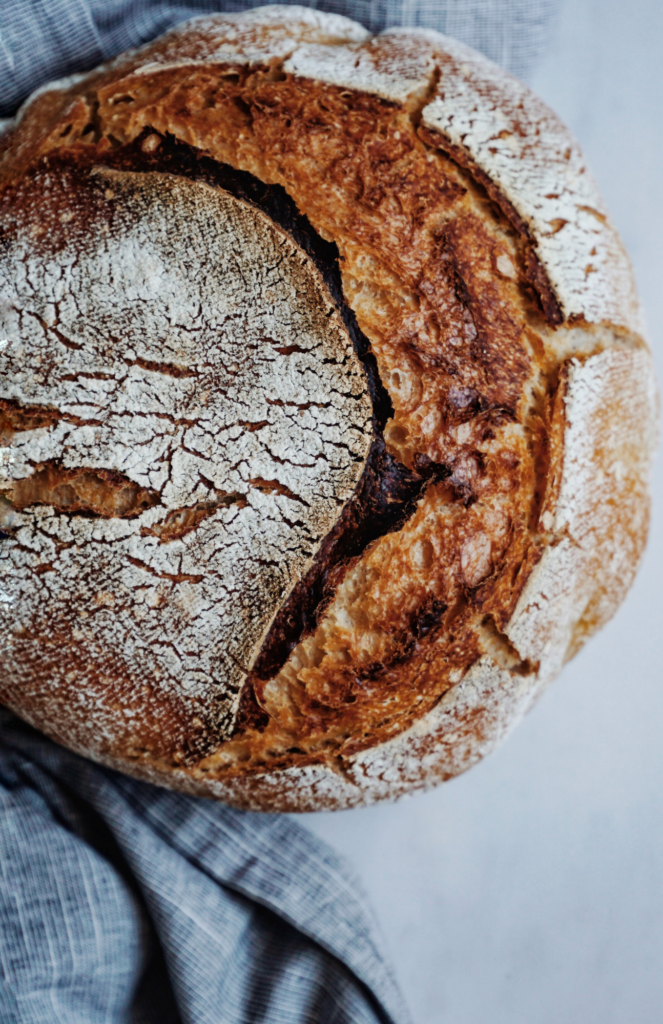
Why Freeze Sourdough Bread?
Having a stash of frozen sourdough bread can provide a convenient solution to ensure a constant supply of this delicious bread whenever you desire it.
The process of making sourdough bread involves a lengthy fermentation period, making it a time-consuming endeavor.
Juggling a full-time job, raising children, or managing numerous social commitments can sometimes make it challenging to bake sourdough bread daily, although not entirely impossible.
By freezing freshly baked sourdough bread, you can enjoy its delightful flavors at any time, and it will closely resemble a freshly baked loaf (unless it has been frozen for an extended period).
This way, you can have the satisfaction of savoring homemade sourdough without the need to bake it from scratch every time.
Including a selection of frozen sliced sourdough bread in your freezer will add a delightful touch of variety to your weekly routine.
Imagine starting your week with a couple of slices of fruity bread on a Monday, indulging in some Jalapeño Cheese sourdough on Tuesday, and continuing the trend with different flavors throughout the week.
The possibilities are endless, allowing you to enjoy a diverse range of flavors and textures to suit your cravings and preferences. By having a selection of frozen sliced sourdough bread at hand, you can easily switch things up and elevate your sourdough experience each day.
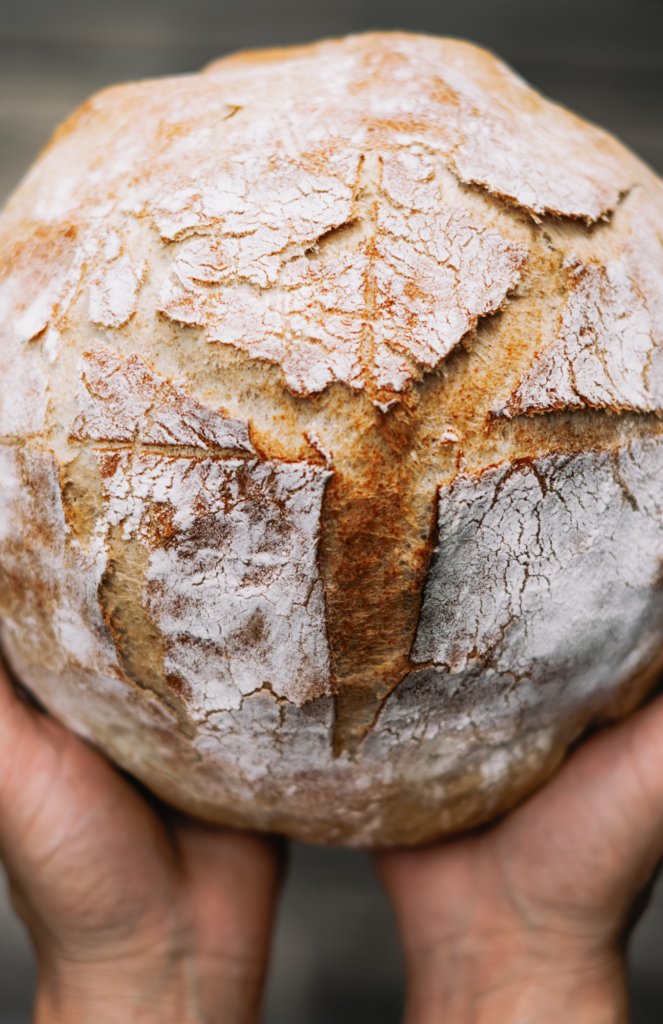
How To Freeze Sourdough Bread
Freezing sourdough bread is a straightforward process, and the key to success lies in how you package the bread before placing it in the freezer.
Proper packaging is essential to minimize any potential deterioration in the crust and texture of the bread. Here are some helpful tips to ensure your sourdough bread freezes well (specifically for a whole, uncut loaf):
1. Allow the sourdough bread to cool completely before wrapping it for freezing. This step is crucial to prevent excess moisture and condensation during the freezing process.
2. Once the bread has cooled, choose suitable wrapping materials. Opt for plastic wrap, aluminum foil, or freezer-safe bags to ensure a tight seal and protection against freezer burn. Make sure the wrapping material is of high quality and able to withstand freezing temperatures.
3. Start by tightly wrapping the sourdough bread with one layer of plastic wrap or aluminum foil. This initial layer will create a barrier against air and moisture.
4. Next, add an extra layer of protection by placing the wrapped bread inside a freezer-safe bag or wrapping it with additional layers of plastic wrap or aluminum foil. Again, make sure the wrapping is tight and secure to prevent any air or moisture from seeping in.
5. Label the package with the date of freezing. This step will help you keep track of the bread’s freshness and ensure you use the oldest loaves first.
By following these steps and ensuring the bread is well-wrapped and sealed, you can freeze your sourdough bread with confidence, preserving its crust and texture as much as possible.
How Long Can You Freeze Sourdough Bread For?
Sourdough bread can be safely frozen for up to 2 months while maintaining its superior texture and taste. Beyond this timeframe, the bread may experience some deterioration in both texture and flavor.
However, if you intend to toast the bread, you will likely not notice any significant changes in taste or texture. In such cases, freezing it for up to 6 months should be acceptable.
On the other hand, if you plan to consume the bread without toasting it, it is advisable to use it within the 2-month period to enjoy it at its best.
By following these guidelines, you can make the most of your frozen sourdough bread and ensure great-tasting sourdough bread every time.
How To Thaw & Refresh Sourdough Bread
Revitalizing frozen sourdough bread is possible, and when done correctly, the result will be a loaf that tastes just like it was freshly baked! Here’s a step-by-step guide on how to refresh a whole, unsliced sourdough loaf:
1. Take your frozen sourdough bread out of the freezer and let it defrost while still wrapped in the foil. Allowing it to thaw on the counter is perfectly fine.
2. Once the bread has completely thawed, unwrap it from the foil. At this stage, it’s essential to spritz the entire loaf with a mist of water. Don’t worry about using too much water as it won’t make the bread soggy.
3. Preheat your oven to a high temperature.
4. Place the damp sourdough bread directly onto the oven rack or on a baking sheet and transfer it into the hot oven.
5. Bake the bread for approximately 5 minutes. This short burst of heat will help rejuvenate the texture and bring out the fresh flavor of the sourdough.
6. Remove the sourdough bread from the oven, and it is now ready to be used as you normally would. Whether you slice it for sandwiches, enjoy it with spreads, or use it in any other way, your revitalized sourdough bread is ready to delight your taste buds!
By following these steps, you can successfully refresh your frozen sourdough bread and enjoy its freshly baked goodness once again.
One of the advantages of refreshing frozen sourdough bread is that you don’t have to wait for it to cool down before slicing into it.
Since the bread has already been fully cooked and is simply being reheated, you can slice into it while it’s still warm without any concerns.
Small batch sourdough loaves are particularly ideal for freezing due to their manageable size, making them a perfect fit for the freezer.
Here’s a hot tip: If you’re baking sourdough specifically with the intention of freezing it, it’s advisable not to over bake it.
Leaving the crust slightly lighter in color, or “blonde,” will allow you to “finish” the browning process when you refresh the bread in the oven. This way, you can achieve a beautifully golden and crusty exterior during the refreshing step.
By keeping these tips in mind, you can conveniently refresh your frozen sourdough bread and enjoy it promptly, whether warm or cooled, without compromising its taste and quality.
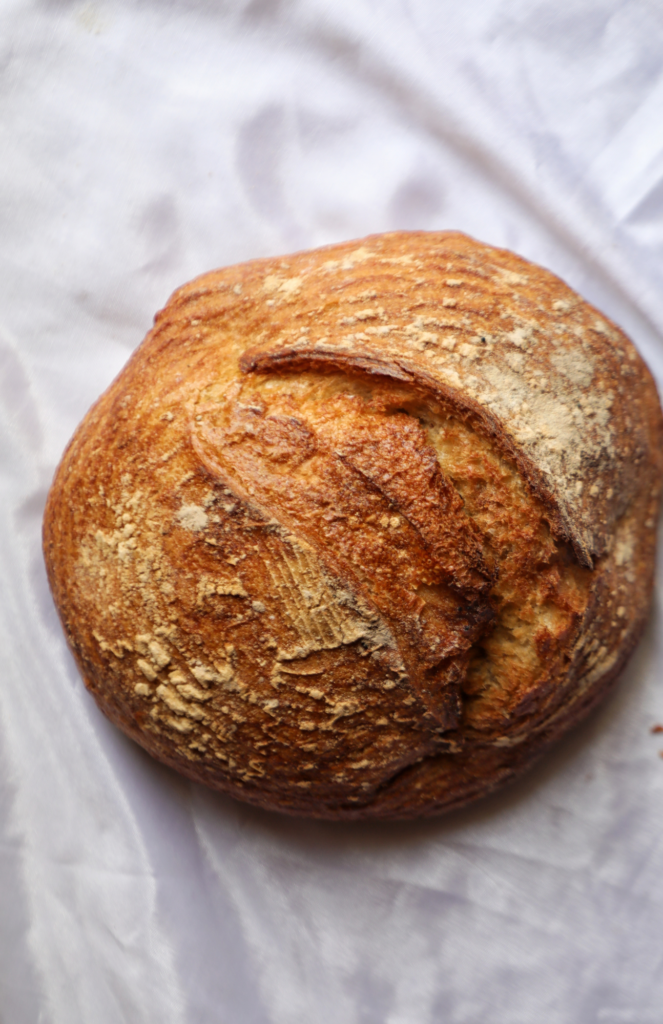
How To Freeze Sliced Sourdough Bread
Slicing your sourdough bread prior to freezing is a practical approach, especially if you only require a few slices at a time for breakfast or other purposes.
This way, you can conveniently retrieve the desired amount from the freezer without wasting the entire loaf. To freeze sliced sourdough bread, follow these simple instructions:
1. Allow your sourdough bread to cool completely after baking.
2. Slice the whole loaf into individual slices of your desired thickness.
3. Prepare a tray or baking sheet lined with parchment paper.
4. Arrange the sliced sourdough bread on the tray in a single layer, ensuring they don’t overlap.
5. Place the tray in the freezer for approximately 15 to 30 minutes. The goal is to freeze the outer layer of the bread while keeping the inside soft.
6. Once the outer layer of the slices is frozen, transfer them to a plastic bread bag or a zip lock bag.
7. Squeeze out any excess air from the bag before sealing it tightly.
8. Label the bag with the date of freezing for reference.
By following these steps, you can freeze sliced sourdough bread efficiently, allowing you to retrieve individual slices as needed without defrosting the entire loaf.
This method helps minimize waste and ensures you can enjoy your favorite bread conveniently and in smaller portions.
By snap freezing the slices of sourdough bread, you can ensure that they won’t stick together in the freezer. This way, you can easily retrieve individual pieces as needed without any hassle.
If snap freezing is not feasible, an alternative is to place a piece of parchment paper between each slice.
This prevents them from freezing together and allows for convenient removal of a single slice at a time. Another option is to freeze one or two slices in smaller zip lock bags, providing even more convenience.
When it comes to enjoying frozen sourdough slices, toasting is the recommended method. You can directly toast the frozen slices without the need to defrost them first.
This way, you can have your desired variety of sourdough bread, such as Jalapeño Cheddar or Fruit Loaf, readily sliced and ready to be toasted straight from the freezer.
Having different types of sliced sourdough bread in the freezer ensures that you always have a selection to choose from, making breakfast or snacking a delightful experience.
Frequently Asked Questions
How can you determine if sourdough bread is spoiled or bad?
Identifying spoiled sourdough bread is relatively easy. It will have a hard texture and be challenging to cut.
Although sourdough bread takes longer to develop mold compared to regular bread, it can eventually become moldy if not stored correctly.
Does frozen sourdough bread taste different after defrosting?
If the sourdough bread was adequately cooled and wrapped, the taste and texture should remain unchanged after defrosting. However, after a period of 2 months, there may be some texture deterioration.
While some people believe that the taste of sourdough bread improves after freezing and defrosting, there is no conclusive evidence to support this claim.
Is there an eco-friendly method for freezing sourdough bread?
To freeze sourdough bread in an eco-friendly way, you can use beeswax wraps or reusable zip lock bags. However, the most effective technique is to wrap the bread in aluminum foil.
You can also reuse zip lock bags or opt for recyclable bags for freezing.
Can sourdough bread be wrapped in parchment paper for freezing?
It is preferable to wrap a cooled sourdough loaf in aluminum foil instead of parchment paper when freezing. Aluminum foil provides better protection against freezer burn and helps prevent the bread from drying out.
Parchment paper does not create a sufficient seal around the bread, leaving it more vulnerable to freezer-related issues.
Buy your Sourdough Starter HERE and get free shipping!
Explore Reader
SHOP
Fitbit Versa 2 Health & Fitness Smartwatch
SHOP
Bamboo Nesting storage boxes
SHOP
Ilia Super Serum Skin Tint SPF 40
SHOP
Ninja Max XL Electric Air FryeR
SHOP
Cuisinart 15-Piece Knife Set with Block
SHOP
Muse Bath Apothecary Hand Ritual
SHOP
Martha Stewart 100% Cotton Bath Towels
SHOP
Eozlink Fluffy Fur Slides
Leave a Reply Cancel reply
Watch me clean my home
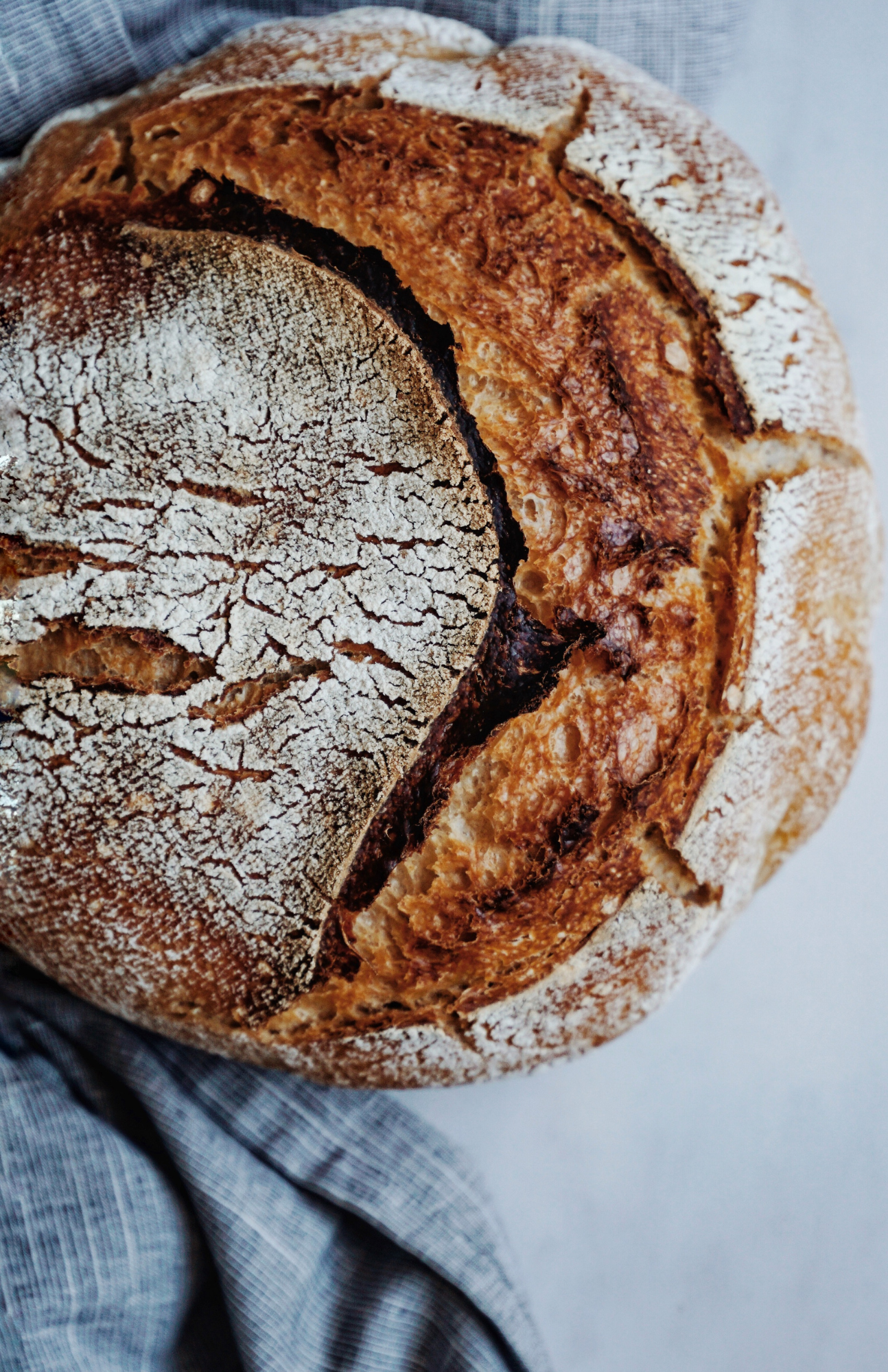


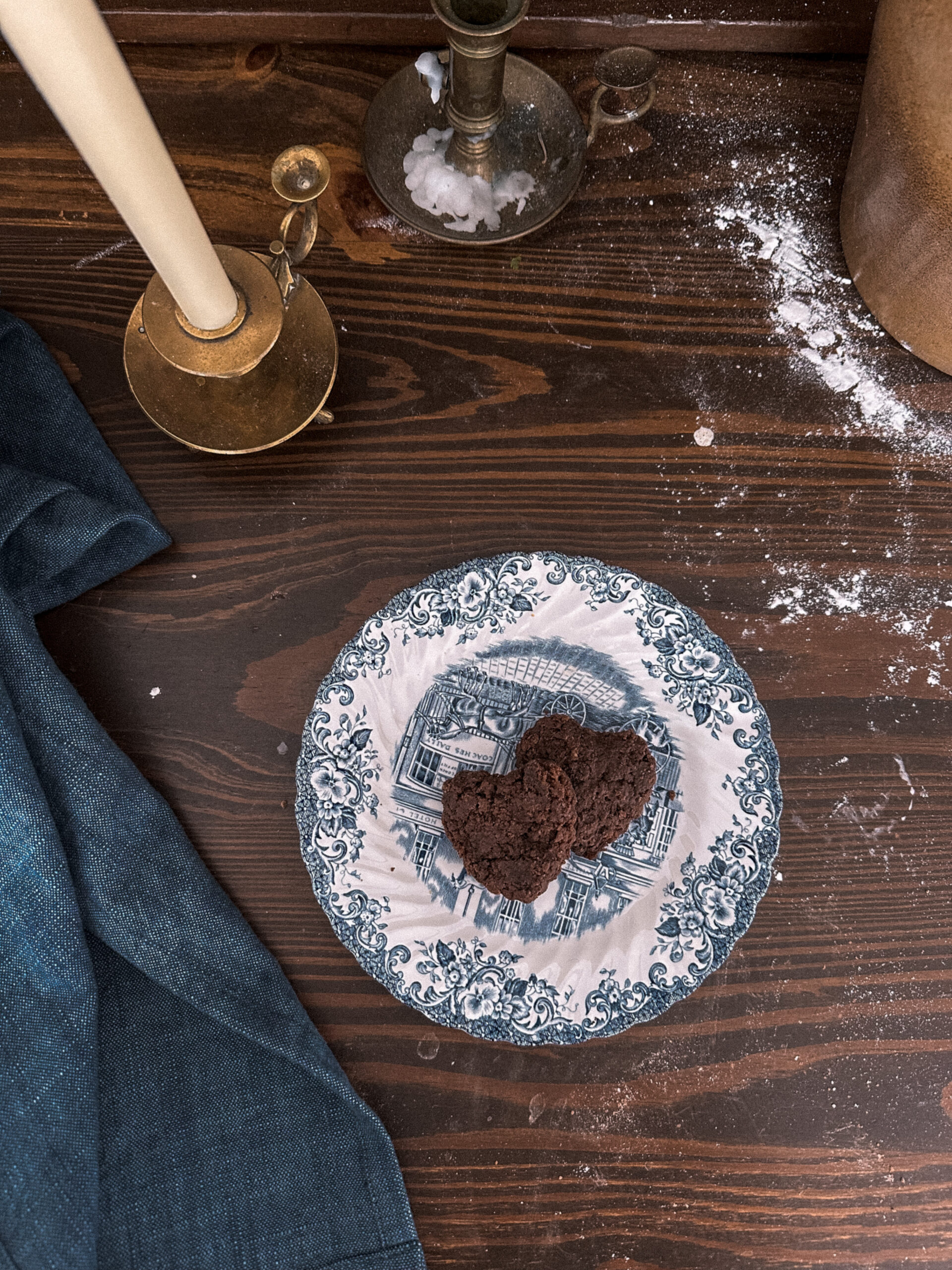
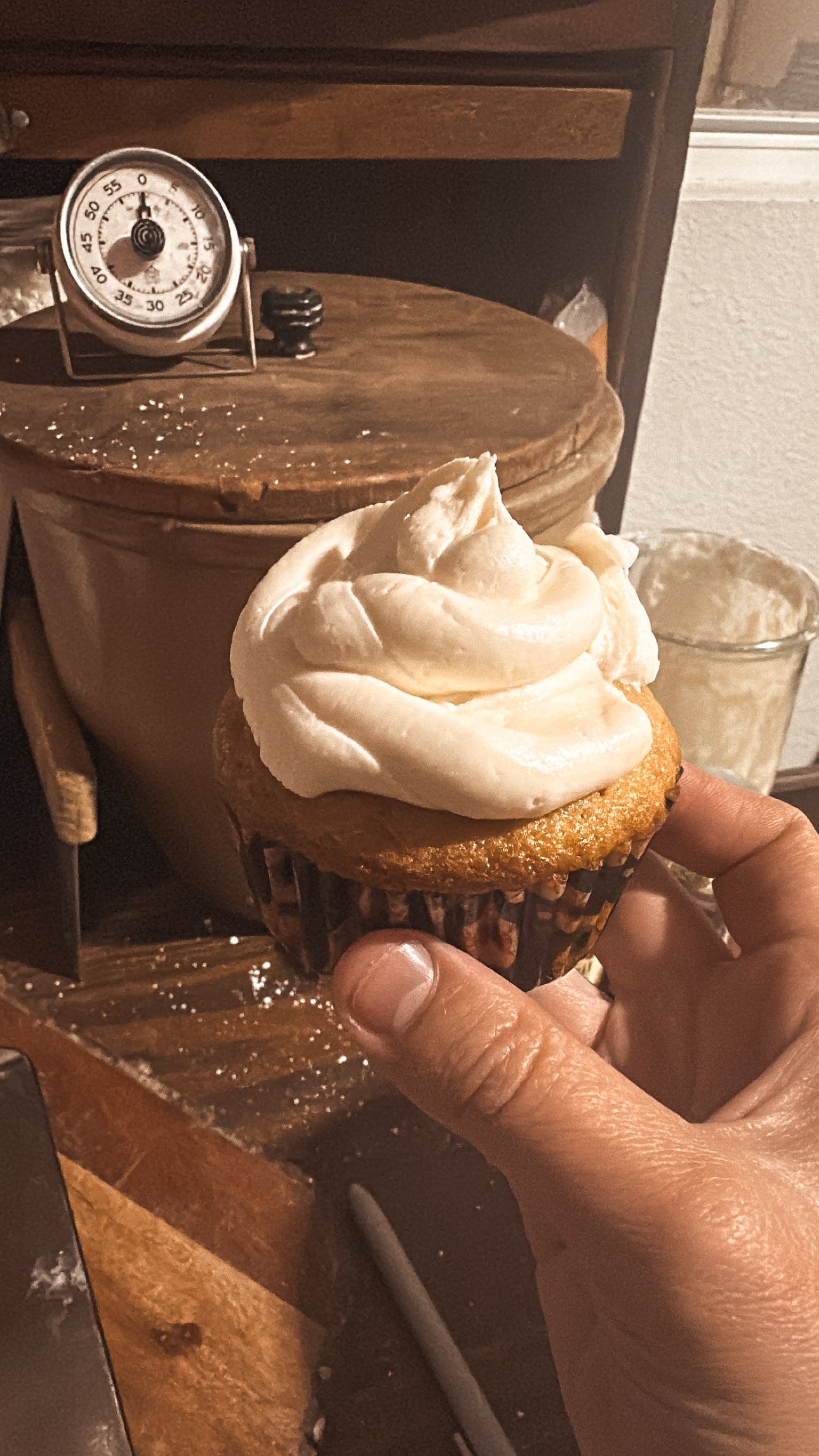


Be the first to comment